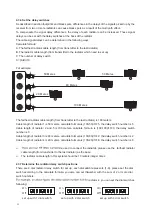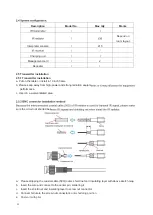
16
2.3 Planning
The system is based on transmission by modulated infrared radiation. Infrared radiation forms part of the
electromagnetic spectrum, which is composed of visible light, radio waves and other types of radiation. It
has a wavelength just above that of visible light. Like visible
passes through translucent materials such as glass. The infrared radiation spectrum in relation to other
relevant spectra is s
2.3.1 Aspects of infrared distribution systems
A good infrared distribution system ensures that all delegateins a conference venue receive the
distributed signals without disturbance. This is achieved by us ing enough radiators, placed at well planned
positions, so that the conference venue is covered with uniform
ate strength. There
f the infrared signal, which must be
considered when planning an infrared radiation distribution system. These are discussed in the next
sections.
2.3.2 Directional sensitivity of the receiver
The sensitivity of a receiver is at its best when it is aimed directly towards a radiator. The axis of maximum
sensitivity is tilted upwards at an angle of 45 degrees (see th
decrease the sensitivity. For rotations of less than +/- 45 degrees this effect is not large, but for larger
rotations the sensitivity will decrease rapidly.
Directional characteristics of the receivers
45
45
90






























